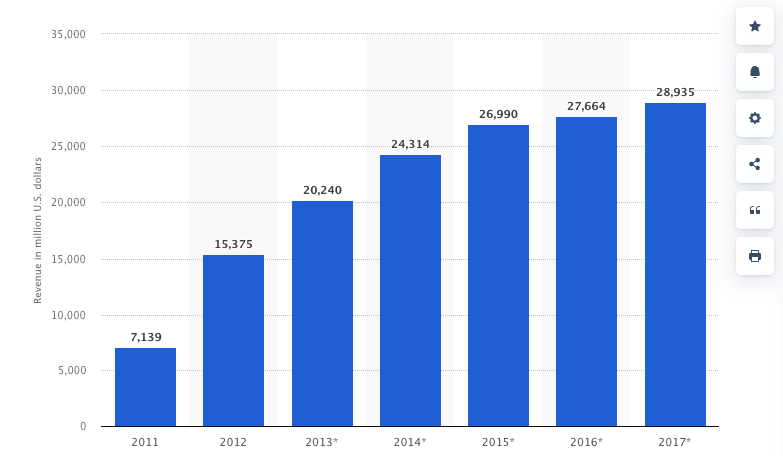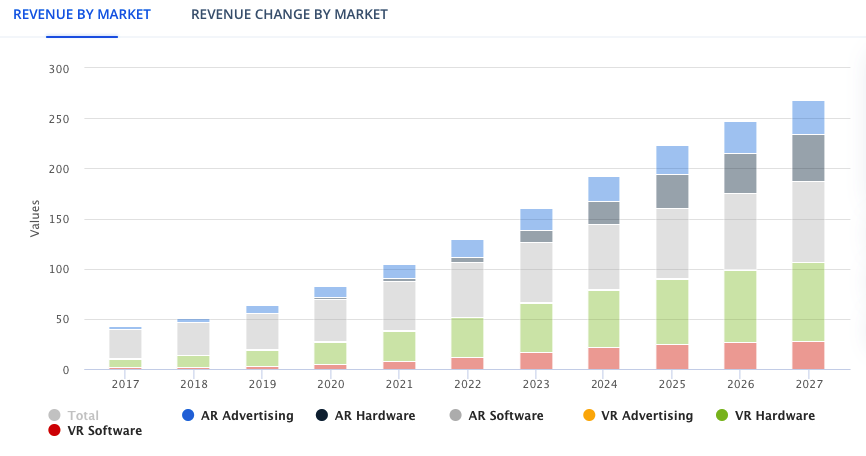Some say that the mobile app boom is over, but let me show you a few figures and outline the future of mobile app development.
Growth
App Annie reports that in 2015, the mobile app industry generated a $41.1 billion in gross annual revenue and that this figure will rise to $50.9 billion. According to Statista, gross annual revenue is projected to exceed $189 billion by 2020. App Annie’s predictions corroborate reports from Forrester that only 46% of the world’s population will own smartphones by the end of 2016. Which means there are a lot more people, machines and devices to come online.

Here are the spaces and ways I believe mobile app development will grow substantially;
Mobile apps to transform companies internally
Forrester has outlined an interesting usage difference in apps by companies. Many companies see mobile devices as a catalyst to transform their business while others see mobile devices as just another development channel. in 2016, only 18% of the companies they surveyed were using mobile devices to transform their companies. That group is expected to grow to 25%. Recently we worked with a large manufacturer to create an app an app that improves productivity and safety on a factory floor. I believe that this space will grow in coming years, combining social behavior, mapping, machine learning and mobile devices to create an efficient and safer work environment
Location based mobile apps
Our reliance on location based mobile apps to guide us is seen not just in the maps we use, but the dating apps, taxi services, restaurant bookings, travel apps, retail, weather etc. This space will grow to incorporate personalized tourist guides, discounts and specials, as well as allowing stores to understand buying patterns and cities to understand traffic flows and safety complexities for it’s citizens and visitors.
Apps as Aggregators
One place to read it all! Although I use Twitter to read news, stay on trend and engage with the world, there are many who use aggregator apps in the same way. Some popular aggregator apps are Flipboard, News360, Feedly and IFTTT. The winning combination for an aggregator app is convenience and an enhanced shopping experience.
AR & VR
Two words. Pokémon Go.
If that didn’t convince you that the world is ready for AR and VR, nothing will. But here is a figure to help. Gartner predicts that by 2020, 100 million consumers will shop in augmented reality.

The world is Android
At the end of 2016, a study by Gartner found that 87,8% of all smartphones worldwide are Android. The growth in the Android market was 3,1% while Apple dropped 2,5% to 11,5% in 2015. Windows account for 0,4% of all smartphones sold with a decrease in share of 2,5%. This means that IoT and machinery will default to Android development.
Show me the Money
According to reports by App Annie, mobile games account generated 85% of mobile app market revenue in 2015; $34.8 billion worldwide. Flurry Analytics recorded the following app usage in 2015;
- Customization apps, such as launchers, icons, wallpapers, and lock-screen and other device-customization apps, topped the list, with a staggering 332% rise in session usage.
- Mobile versions of newspapers and magazines came in second, with a growth of 135%.
- Productivity tools and apps were third with a 125% rise.
- Lifestyle and shopping solutions recorded an 81% growth and were ranked fourth.
- Travel, sport, health and fitness utilities, along with messengers and social apps, gained from 53 to 54%.
- Games turned out to be the only outlier, with a 1% decline in users’ time.
Deep-linking
An interesting space of development is how these apps begin to speak to each other. This is termed deep-linking and there are already companies invested in this space such as Branch which raised $53 million from 2014-2016 and the mobile app search business Quixey has developed $134 million by 2016. Apple and Facebook have already offered app linking options. If this trend continues, navigation, discoverability and engagement will drastically improve in the next 10 years.
Globalisation, Open Source and AI
Apps will more from American-centric to global. I believe that this will happen, in part, because it is becoming easier to develop with the help of open source. Small studios will be quicker to market than large corporations and with AI open data, it will become easier and easier to develop and shift.
Gartner has predicted that by the end of 2017 “mobile apps will be downloaded more than 268 billion times, generating revenue of more than $77 billion and making apps one of the most popular computing tools for users across the globe.” and the latest Mobility report from Ericsson reveals that there will be 6.1 billion Smartphone users by 2020. I only see growth in mobile apps, what do you think?





